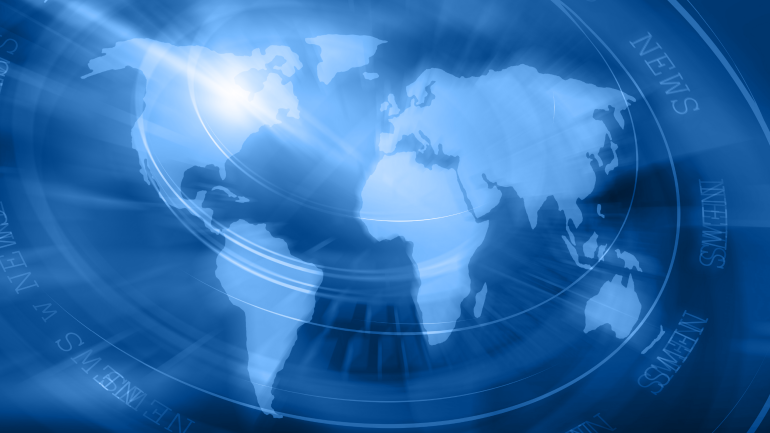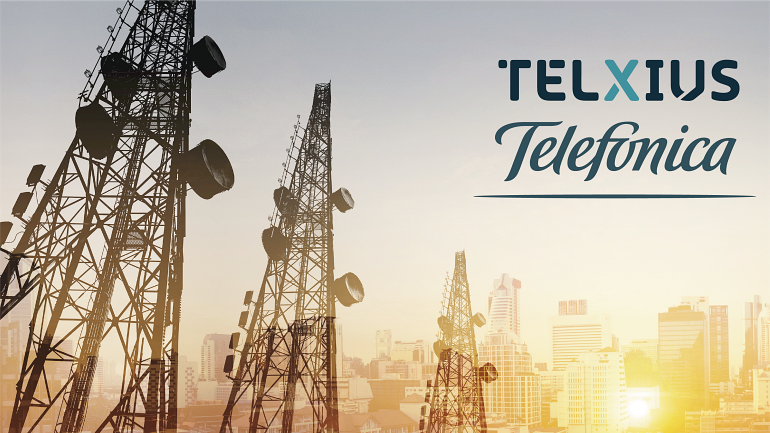Deutsche Telekom hits 50% 5G population coverage Deutsche Telekom, the largest German telecommunications company, has expanded its 5G connectivity to 3,000 towns across all German states. A total of 18,000 antennas, out of the 30,000 already installed, have been upgraded to support 5G services in the last 5 weeks, and as a result, 50% of Germany‘s population now has 5G coverage. Walter Goldenits, Head of Technology, commented: “The 50 percent is no reason for us to rest on our laurels. The 5G rollout continues with the same intensity. Two thirds of the population are our next target. And we want to achieve this too this year.” Read more at https://tinyurl.com/y4z6fd2m Google Cloud and Orange announce their collaboration Google Cloud and Orange announced that they are partnering up for data, AI and edge computing development. The two companies plan on transforming Orange’s IT infrastructure, developing future cloud services, improving operational efficiency…
Vyopta Introduces Support for Microsoft Teams On Tuesday, Vyopta, a provider of Unified Communications (UC) monitoring and analytics solutions, announced the release of their comprehensive support for Microsoft’s cloud-based UC products including Skype for Business, Microsoft Teams Rooms, Microsoft Teams and Surface Hub. Vyopta is one of the first companies to provide monitoring and analysis services to Microsoft Teams, helping to speed up the deployment of the Microsoft Teams software, simplify troubleshooting and reporting, and improving the service quality of Microsoft’s voice and video calling experience. In the near future, Vyopta will continue to expand its monitoring capabilities, including more advanced and proactive Microsoft Teams alerts. Read more at https://tinyurl.com/y3r396fh Telecom Argentina hit by a major ransomware attack One of Argentina‘s largest Internet Service Providers (ISPs) has suffered a serious ransomware attack. The cybercriminals who carried out the attack, demanded $7.5 million in Monero cryptocurrency from the ISP to regain…
Qualcomm invests $97 million in India’s Reliance Jio Platforms Qualcomm has become the latest high ranking sponsor of the four-year-old Indian company, Reliance Jio Platforms. On Sunday evening, Qualcomm Ventures revealed their plans to invest $97 million in Reliance Jio Platforms and to assist that company launch advanced 5G infrastructure and services for their local customers. Furthermore, Reliance Jio Platforms has introduced cut-rate voice and data plans into the Indian telecommunications market, attracting almost 400 million subscribers. This rapid growth has resulted in the company becoming the most successful operator in the world’s second largest market in less than four years since its establishment. Read more at https://tinyurl.com/y9hponyd Deutsche Telekom explores quantum tech with OPENQKD The German operator Deutsche Telekom, in partnership with the OPENQKD (Open European Quantum Key Distribution) consortium, are preparing to research quantum key distribution (QKD) technologies in order to develop quantum-safe data transmission. In spite of the…
European telcos: We’re ready to “lift the continent out of this recession” The European Telecommunications Network Operators’ Association (ETNO) has released a joint statement calling on EU institutions and national governments to support 5G and fiber rollout, stimulate the uptake of technology, fight misinformation, and focus on digital skills and education. According to ETNO, a new approach is needed to ensure that spectrum auctions are timely and conditions for spectrum assignment support network deployment. Sharing agreements for Radio Access Network (RAN) should be supported and incentivized, as well as all fiber investment models should be adequately encouraged. Moreover, future EU initiatives should dramatically reduce roll-out costs for both mobile and fixed networks. Read more at https://tinyurl.com/yadrfxfg Microsoft’s new Teams features fight video conferencing fatigue Microsoft Team’s brand seeks to fight “Zoom fatigue” and exhaustion of physical isolation with its new updates and features. The news includes a shared background to make participants…
Australia to invest a record A$1.35bn in cybersecurity The Australian government has announced an AUS USD 1.35 billion program to combat the rise in cybersecurity threats that have intensified in recent months. This initiative, named the Cyber Enhanced Situational Awareness and Response (CESAR) package, will seek to identify more threats, fight foreign cybercriminals and build stronger partnerships within the industry. The nation’s largest ever investment in cybersecurity will supercharge the Australian Signals Directorate (ASD) and the Australian Cyber Security Centre. Prime Minister Scott Morrison said, “My government’s record investment in our nation’s cyber security will help ensure we have the tools and capabilities we need to fight back and keep Australians safe.” Read more at https://tinyurl.com/ya8q3xsl India has banned TikTok, WeChat, and other China-based apps The Indian government has banned 59 Chinese-made apps, including TikTok and WeChat, over concerns that “they are engaged in activities which are prejudicial to sovereignty…
Ujet raises $55 million to expand cloud-based customer support platform Ujet, a leading provider of cloud contact center software, has secured USD 55 million in Series C funding to expand its sales and marketing teams at home and internationally, as well as launch new products and features. The San Francisco-based company already claims to have several high-profile clients, including Google, Instacart, and PayPal’s iZettle. Ujet enables customers to contact support teams through voice, email and messaging, and integrates smartphone cameras so they can easily submit photos and videos documenting problems. With this funding, the company is now well-positioned to capitalize on the increased demand for cloud-based contact center technology. Read more at https://tinyurl.com/y8ayek29 UK security officials tell telcos to stock up on Huawei gear – report The National Cyber Security Centre (NCSC) has suggested that UK telecoms operators stockpile critical equipment to ensure the sustainability of telecoms infrastructure, as political…
Salt Security raises $20 million to protect APIs with AI US-based Salt Security, a cybersecurity startup that helps companies protect APIs, has closed a USD 20 million Series A round. The company plans to use the new capital to renew its investments in product development and expand its sales and marketing teams. Salt’s platform aims to prevent cyber attacks with a combination of AI and machine learning techniques. It analyzes a copy of the traffic from web, software-as-a-service, mobile, microservice, and the Internet of Things (IoT) app APIs. Salt uses this process to understand each API and creates the basis for normal behavior tailored to customers and their applications. After that, Salt reveals anomalies that are identified as indicators of an attack during reconnaissance. Read more at https://tinyurl.com/y88n2l7r Lenovo delivers world’s first 5G laptop with Verizon, EE, Sunrise and CMCC Lenovo, one of the world’s leading personal technology companies producing innovative PCs and mobile…
The Dublin, Ireland-based company AirSpeed Telecom has partnered with Intellicom, an international business telephony and contact center provider, to integrate new Voice over IP (VoIP) solutions into the telecommunications products and bandwidth services provider’s existing product portfolio. AirSpeed Telecom said that this integration will assist end-users in their quest to achieve superior operational excellence and offer an enhanced customer experience. According to the statement, the new VoIP solutions encompass a full-featured business telephony and contact center system that carries voice and other multimedia traffic across broadband networks. AirSpeed Telecom noted that by leveraging the power of IP networks, businesses can improve customer service, increase workplace mobility and enhance remote working solutions, and also reduce telecommunications costs. “Our customers’ needs are changing and at AirSpeed, we like to think that we’re able to innovate to meet those developing requirements. While best known for high-class connectivity, AirSpeed is increasingly offering business-class…
Ireland’s GoMo goes for more as it hits 200,000 customers Virtual network operator GoMo, the budget mobile brand of Irish telco Eir, has reached 200,000 customers, since launching only eight months ago. The company exists entirely as a digital brand, requiring customers to sign up online to be mailed a SIM card. This “digital-first” approach even extends to customer service, which is available only through online chat, without accessible call centers. GoMo uses Eir’s network and offers 99 percent population coverage and over 97 percent 4G coverage. Since its launch, GoMo has gradually increased its customer base, with figures from the Irish regulator suggesting that the majority are migrating from rivals Three and Vodafone. Read more at https://tinyurl.com/y7uwytwt JSonar raises $50 million for AI-powered database security products Database security startup jSonar has secured USD 50 million, which it plans to put toward R&D and go-to-market efforts. The company said that its AI-powered solutions help users…
Telefonica Deutschland Holding AG, the leading mobile operator in the German market, has announced an agreement to sell about 10,100 telecom sites to the group’s majority-owned tower infrastructure arm Telxius Telecom for EUR 1.5 billion. The acquisition deal includes 10,000 rooftop sites and up to 80 tower sites, as well as an obligation to build 2,400 new sites (BTS). This move will ensure the company’s exceptional future growth in Germany, Europe’s largest telecom market, where a robust deployment by operators is expected to improve mobile broadband coverage and secure the future deployment of 5G. Markus Haas, CEO of Telefonica Deutschland, said, “This is one of the largest and most important transactions in the history of Telefonica Deutschland. It represents an important milestone in focusing our business activities. We are pursuing a clear course based on our growth strategy. Within this strategy, we are focusing on further improving the quality of the O2 network for our…













